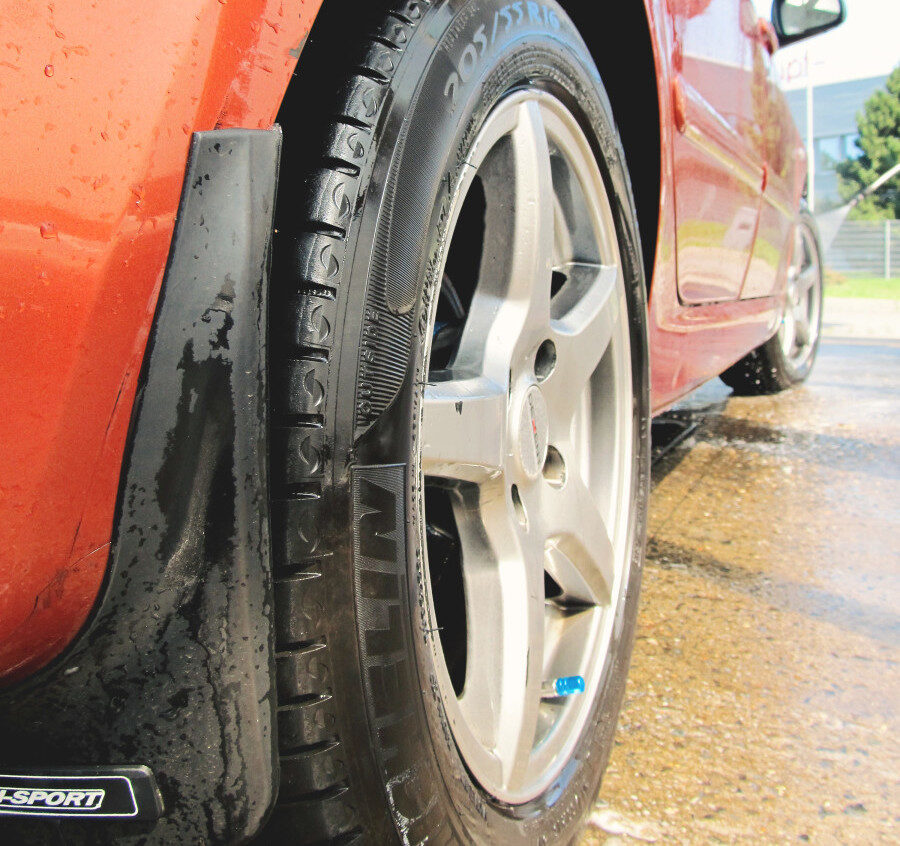This post is part of a sponsored series.
Last week, I heard a hissing in my front tire as I walked past it to go into the grocery store. Upon coming back to my car, I noticed my tire was almost flat. When I looked closer, I seen that I’d picked up a nail somewhere and it had completely deflated my tire.
I filled it up enough to get home, and then me and my husband made some calls to get a new set of tires. Since it’s typically advised to replace at least the set (if not all of them) at the same time, we knew we had a large expense coming our way. So after doing some digging, I learned a lot about car tires and thought I’d share a little quick guide to car tires with you.
Reading Your Tire
Type of Tire – If you look closely at your tire, you’ll see a series of numbers and letters that usually starts with a “P” although it may also have an “LT” for a large truck or max load vehicle.
Width – After the “P” or the “LT”, the next in the series is 3 numbers that represent your tire width in mm.
Ratio – After those three numbers, there will be a forward slash and more numbers. These represent the aspect ratio of your sidewall to tire width. Then, it’ll typically have an “R” for radial construction.
Diameter – After the “R”, is a set of numbers which represent the diameter of your tire rim in inches.
Load & Speed Rating – Following the diameter numbers, your tire will give the tire’s load rating followed by it’s speed rating. To learn more about this, read this article on car tires.
Seasonal – The last letters in the sequence tells you the season of your tires. If you see a “M+S” this means you have all-season tires and they can handle “Mud + Snow”.
—
There is much to know when it comes to these circles of rubber, but at least by knowing the basics you can learn your way around. When did you last change your tires? What did you learn?


Leave a Reply